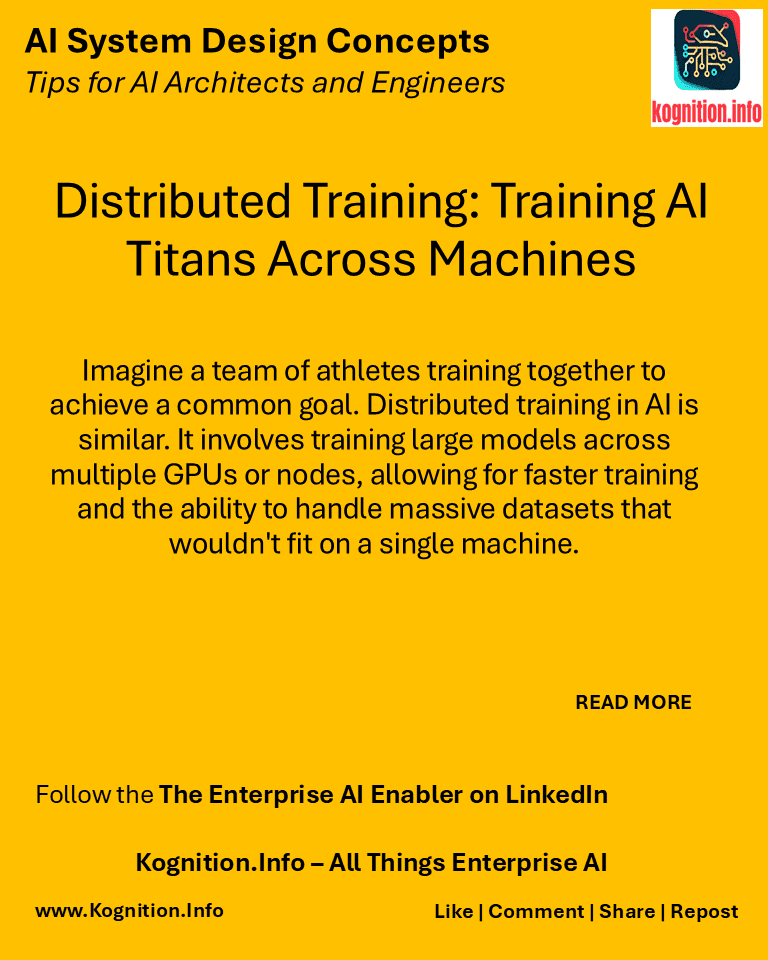
Imagine a team of athletes training together to achieve a common goal. Distributed training in AI is similar. It involves training large models across multiple GPUs or nodes, allowing for faster training and the ability to handle massive datasets that wouldn’t fit on a single machine.
Use cases:
- Training massive deep learning models: Distributing the training of large language models or image recognition models across multiple GPUs.
- Accelerating training time: Reducing training time by parallelizing computations across multiple devices.
- Handling massive datasets: Training on datasets that are too large to fit on a single machine.
How?
- Choose a distributed training framework: Select a framework like TensorFlow distributed, PyTorch distributed, or Horovod.
- Divide the workload: Partition the data or model parameters across the devices.
- Synchronize gradients: Ensure that gradients are properly aggregated and updated across the devices.
- Optimize communication: Minimize communication overhead between devices to improve efficiency.
Benefits:
- Faster training: Reduces training time significantly for large models and datasets.
- Increased model capacity: Enables training of larger and more complex models.
- Improved resource utilization: Efficiently utilizes multiple GPUs or nodes.
Potential pitfalls:
- Increased complexity: Requires careful configuration and management of the distributed environment.
- Communication bottlenecks: Communication between devices can slow down training.
- Debugging challenges: Debugging distributed training can be more challenging than single-device training.
